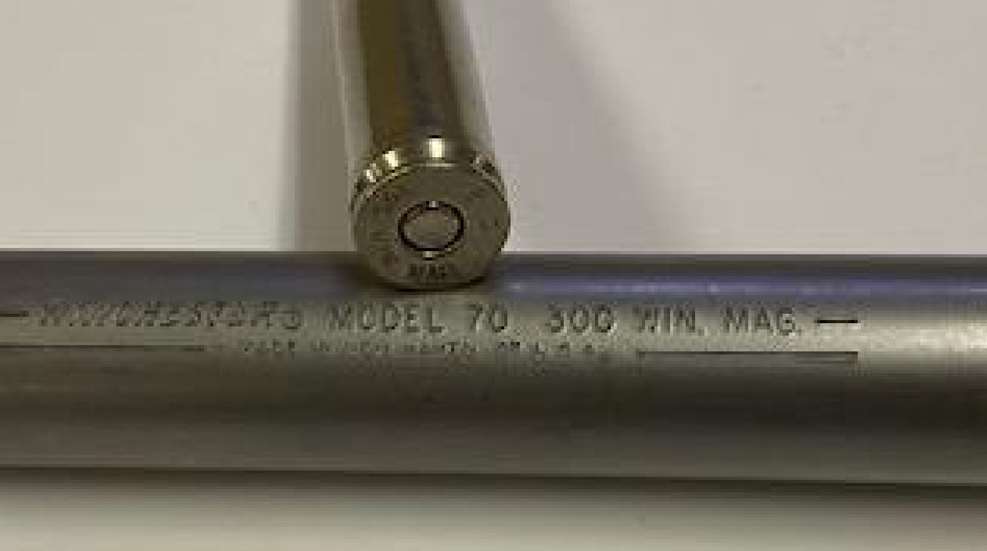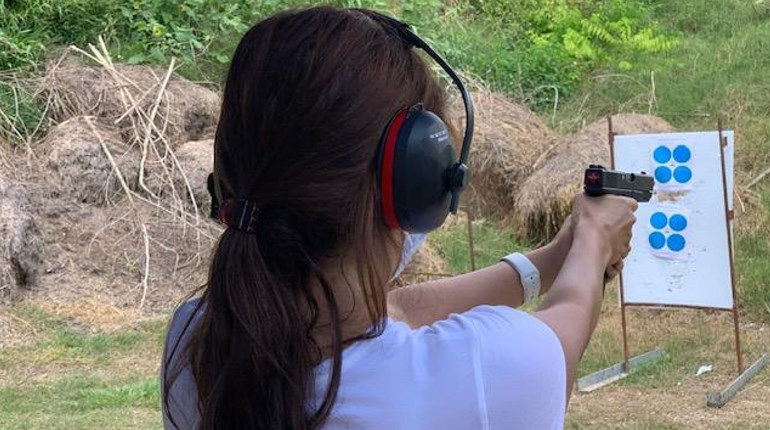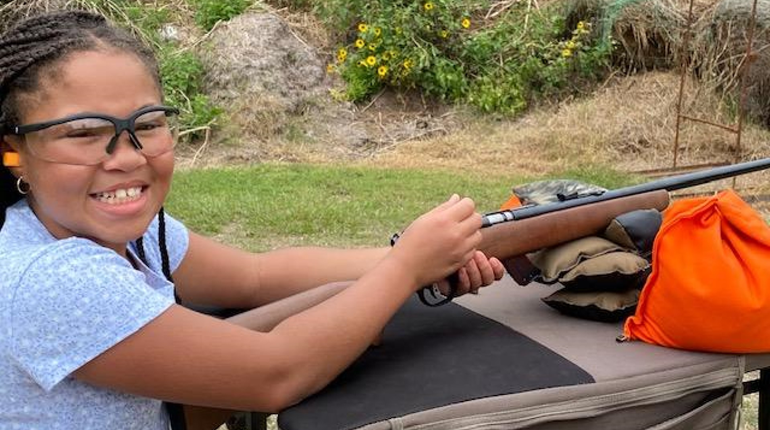
Firearm cartridges are made up of four main components: bullet, case, gun powder and primer. If you look at a schematic of a case and the seated bullet, you will see a lot of numbers that relate to specific length, thickness and angles of the cartridge. It is the precise combination of these measurements that make a particular cartridge, that cartridge, whether it is a .30-06 Sprg. a .30-06 Sprg., a 9mm Parabellum a 9mm Parabellum, a .45 ACP a .45 ACP, and so on.

Once a cartridge is developed, you need a firearm to match the cartridge, so you can shoot the cartridge out of that specific firearm. That means a firearm must be chambered to accept a specific cartridge. When a chamber is milled out of a piece of steel, it must be cut to the specific lengths, thicknesses and angles of the cartridge. This allows the cartridge to enter the chamber, create the proper seal when the round is fired, and allows for the bolt to close with the proper distance of the firing pin to strike the primer.
There are a lot of things that must properly line up before a cartridge can be accurately fired through a firearm. The most important thing to ensure the correct relationship between the cartridge and the chamber is the headspace. Headspace ensures that when a cartridge is fed into a chamber and the bolt is closed, and when the trigger is pressed, the firing pin is in the correct position for consistent ignition and the round is in the correct position for consistent accuracy.
Headspace is the distance from the base or head of the cartridge to the point on the case that that keeps the round in the correct position in the chamber. Headspace prevents the round from traveling too far down the barrel and keeps it in the chamber. Different types of cartridges have different points of contact to ensure proper headspacing. Improper headspace can lead to malfunctions and stoppages.
If the headspace is too short, it can cause the cartridge to fail to feed into the chamber from the magazine. This can also prevent the firearm from going into battery. If enough force is used in chambering a round that has too short of headspace, it can become stuck in the barrel and cause deformation of the cartridge. This can result in a light strike preventing the cartridge from discharging. If the primer does ignite, it can cause excess chamber pressure that can lead to catastrophic failure.
If the headspace is too long, accuracy can be compromised. A headspace that is too long can prevent the bolt from closing all the way, which can also lead to the firearm not going in battery. One indication that a cartridge has too much headspace is the protrusion of the primer in the case after it has been fired. In a cartridge with proper headspace, the primer should stay flush with the head of the case. Excessive headspace can cause case head separation. This can damage the firearm and can cause serious injury or death to the shooter.

Improper headspace can be caused by conditions other than cartridges. A common occurrence is excessive bolt wear. Sometimes this is referred to as the bolt being out of tune. This can occur if the bolt was originally manufactured with a coating or a specific finish. As these finishes start to wear off, the headspace changes. This also applies to finishes and coatings of the barrel. Additionally, shooting cartridges with excessive pressure can lead to wear of the firearm’s chamber and ultimately affect headspace.
There are four types of headspace dimensions found on cartridges. These are shoulder cartridges, rimmed cartridges, belted cartridges, and case mouth cartridges. Image From top: shoulder cartridge; rimmed cartridge; belted cartridge; case mouth cartridge
Image credit: commons.Wikimedia image; license: wikipedia.org/wiki/Creative_Commons
Rimmed Cartridges
Rimmed cartridges are commonly shot out of revolvers. Common rimmed cartridges include .22 LR, .38 Special, .45 Colt, and .45-70 Govt. The rim on these types of cartridges serves several purposes. When loaded in one of the revolver chambers, the rim on the cartridge holds the cartridge in place and prevents it from falling through the cylinder of a revolver. It also prevents straight wall cartridges, such as the .22 LR, .357 Rem Mag, and the .44 Rem Mag, from passing through the chamber, into the barrel. The other has to do with headspace. The thickness of the rim places the primer in the proper position so that light strikes from the firing pin are prevented.

Shoulder Cartridges
Shoulder cartridges are commonly referred to as necked rounds. The headspace is located off the shoulder. The shoulder cartridge headspace is determined by where the case starts to neck down, the angle of the shoulder, and length of the shoulder. Think of it as being similar to placing a funnel into a pipe. The difference is the chamber of the gun would flare to follow the contour and angel of the case’s shoulder. Once again, if the headspace is too long it will not chamber but if it is too short it could lead to blown primers, case head separation, split cases, and pressure blow back which can be a dangerous situation.
Belted Cartridges
Belted cartridges are usually associated with magnum rifle rounds. Belted cartridges have a thicker ring of brass above the head, just forward of the extractor grove. Some belted cartridges include .375 H&H Magnum, .330 Win Magnum, .416 Weatherby Magnum, and .458 Lott Magnum. The headspace on a belted cartridge is measured from the breach face to the top of the belt. Headspace issues with a belted cartridge can cause serious issues for the shooter. This is because these are all very large magnums with extremely high pressures. Case failures with these calibers can create life threatening situations.

Case Mouth Cartridges
Case mouth cartridges include most semi-automatic straight wall pistol cartridges. To prevent the cartridge from falling down the barrel when loading the firearm, the headspace is located at end of the case where the bullet enters the chamber. To accomplish this, there is a rapid step down in the chamber where the case meets the bullet. This step down is very similar to the forcing cone of a revolver, minus the cylinder gap. This step-down in the chamber feeds the bullet into the rifling of the barrel.
Headspace is a common term that all shooters should understand, even though it may be a component of a cartridge with which the average shooter never has to be concerned. It is about being an educated shooter. It is no different than understanding what a chamber is. Most individuals never have to deal with the particulars of their firearm’s chamber, but they should be educated on the purpose and its design. Just as it is important to understand that the chamber is designed for a specific round, shooters need to understand what headspace is to identify a potential safety issue with the firearm and/or cartridge.
Headspace is more of a concern for individuals who reload. A reloader is very concerned with headspace because they want their cartridges to properly feed, fire, and eject from the firearm they are shooting. This is why a case must be resized and trimmed. The reason is so that the cartridge has the proper headspace.














































